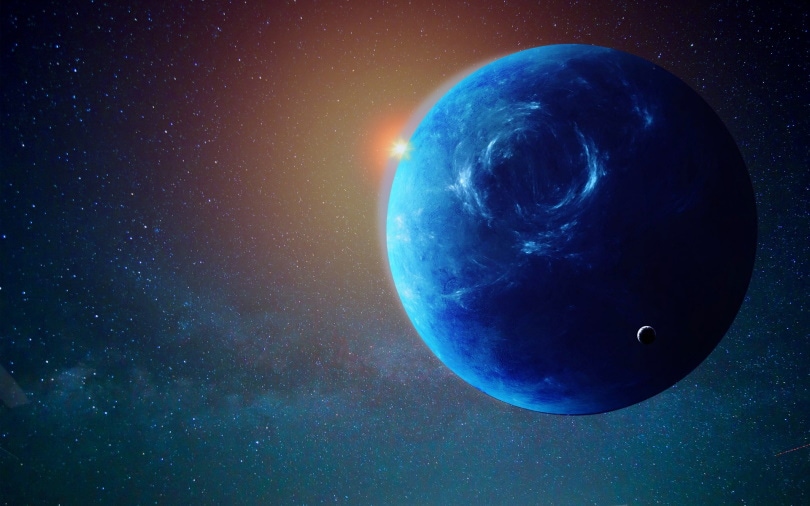Ice Giant Planet Neptune’s Clouds Disappear, Baffling Astronomers

Ice giant planet Neptune experiences a baffling vanishing act as its once-prominent azure clouds disappear into a mystery (Photo: Hubble Space Telescope)
Is the Sun to Blame for the Vanishing Clouds on Neptune, the Ice Giant Planet?
According to the Space article, Astronomers’ surprising update: Clouds on the ice giant planet Neptune vanish, leaving experts curious. Analyzing images from 1994 to 2022, a pattern emerged in 2019, with cloud coverage on the ice giant planet’s mid-latitudes fading until disappearing completely. The swift disappearance baffles scientists, sparking inquiries into the cause of this phenomenon on the ice giant planet.
Scientists have unveiled the enchanting choreography of the sun’s magnetic fields, a phenomenon known as the 11-year solar cycle. Despite its fiery façade, the sun houses a dynamic realm of charged particles, akin to a fluid ocean. This plasma conducts intricate magnetic movements that gradually contort, culminating in the mesmerizing reversal of the sun’s poles every 11 years. Yet, this celestial performance offers more than visual delight. The intertwining magnetic fields build tension, giving rise to breathtaking solar flares and radiation surges that can challenge satellites. These magnetic-induced occurrences encompass grand solar outbursts, referred to as coronal mass ejections. These outbursts shower Earth with charged particles, momentarily disrupting communication networks.
What’s particularly intriguing is that the solar cycle’s impact transcends the sun’s vicinity. While the sun undergoes its magnetic spectacle, it emits ultraviolet radiation that permeates the entire solar system. Even the ice giant planet Neptune, positioned 2.8 billion miles away, experiences this influence. The influx of radiation resulting from the sun’s magnetic transformations could potentially influence Neptune’s winds and cloud cover. This presents a novel angle to understanding the interplay between distant ice giant planets and our sun’s magnetic artistry.
READ ALSO: New Horizons Spacecraft’s Expedition – Uncovering Uranus And Neptune From Uncharted Rear Perspectives
NASA’s Hubble Space Telescope Unveils Three Decades of Neptune Discoveries
According to the Hubble site, Over many years, NASA’s Hubble Space Telescope, along with the W. M. Keck Observatory and the Lick Observatory, has uncovered something quite surprising about ice giant planet Neptune’s weather. Even though Neptune is way out there as the farthest major planet in our solar system, it seems like its clouds aren’t following the usual rules. Instead of being governed by its long-lasting seasons, Neptune’s clouds appear to be responding to the sun’s actions. It’s a bit unexpected, considering that Neptune only gets a tiny fraction (just 0.1%) of the sunlight Earth gets.
In a recent study led by a team from the University of California (UC) Berkeley, they found that Neptune’s cloud activity has been changing, especially around its middle regions, starting around 2019. What’s puzzling is how quickly these changes happened – the clouds started vanishing in a surprisingly short time. This shows that Neptune’s weather is tied up in a complex dance with the sun’s behavior, and it’s fascinating to see how they’re influencing each other.
READ ALSO: New Ukraine Aid Package — US Announces $200









